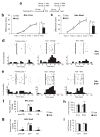The nucleus accumbens core and shell are critical for the expression, but not the consolidation, of Pavlovian conditioned approach
- PMID: 19159648
- PMCID: PMC4667776
- DOI: 10.1016/j.bbr.2008.12.024
The nucleus accumbens core and shell are critical for the expression, but not the consolidation, of Pavlovian conditioned approach
Abstract
The nucleus accumbens (NAc) is important for the ability of motivationally significant stimuli to guide behavior. To further delineate its role in appetitive Pavlovian conditioning, we tested the hypothesis that the NAc contributes to memory consolidation and expression for a goal-tracking version of Pavlovian conditioned approach (PCA) in rats. We found that neither post-training reversible inactivation with the GABA receptor agonists muscimol and baclofen nor inhibition of protein synthesis with anisomycin (ANI) in either the core or shell regions of the NAc had an effect on approach to a reward port in response to a reward-predictive cue (conditioned stimulus, CS+). In contrast, pre-test reversible inactivation of both the core and shell decreased conditioned responding during the CS+. Unlike inactivation of the core, however, reversible inactivation of the shell also produced an increase in responding during the CS- and the inter-trial interval. This suggests that the NAc is not involved in the consolidation of goal-tracking PCA, but that once the memory is formed, the core is required for expression of the CS-unconditioned stimulus (US) association and the shell is required to inhibit conditioned approach behavior at times when the CS+ is not presented.
Figures






References
-
- Mogenson GJ. Limbic-motor integration. In: Epstein AN, editor. Progress in Psychobiology and Physiological Psychology. New York: Academic Press; 1987. pp. 117–170.
-
- Mogenson GJ, Jones DL, Yim CY. From motivation to action: functional interface between the limbic system and the motor system. Progress in Neurobiology. 1980;14(2–3):69–97. - PubMed
-
- Cardinal RN, Parkinson JA, Hall J, Everitt BJ. Emotion and motivation: the role of the amygdala, ventral striatum, and prefrontal cortex. Neuroscience and Biobehavioral Reviews. 2002;26:321–352. - PubMed
-
- Balleine BW. Neural bases of food-seeking: affect, arousal and reward in corticostriatolimbic circuits. Physiology and Behavior. 2005;86:717–730. - PubMed
-
- Everitt BJ, Parkinson JA, Olmstead MC, Arroyo M, Robledo P, Robbins TW. Associative processes in addiction and reward: the role of amygdala-ventral striatal subsystems. Annals of the New York Academy of Sciences. 1999;877:412–438. - PubMed
Publication types
MeSH terms
Substances
Grants and funding
LinkOut - more resources
Full Text Sources

